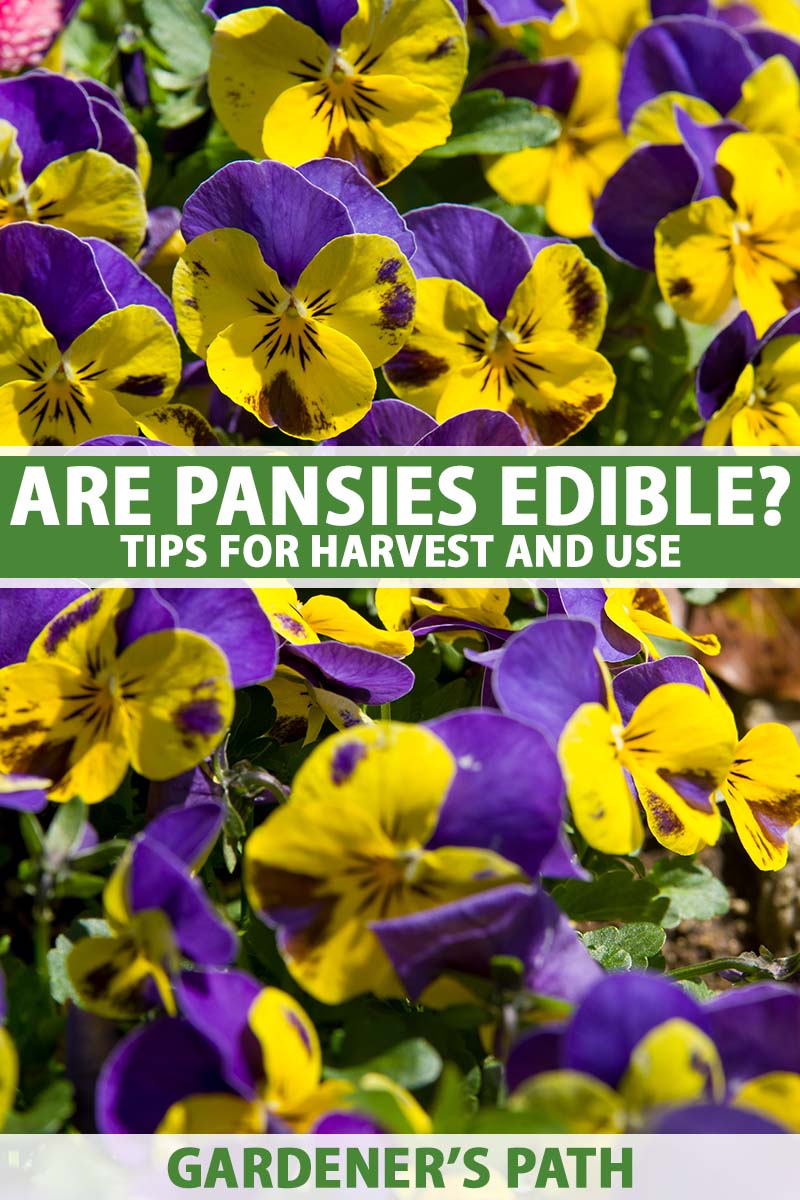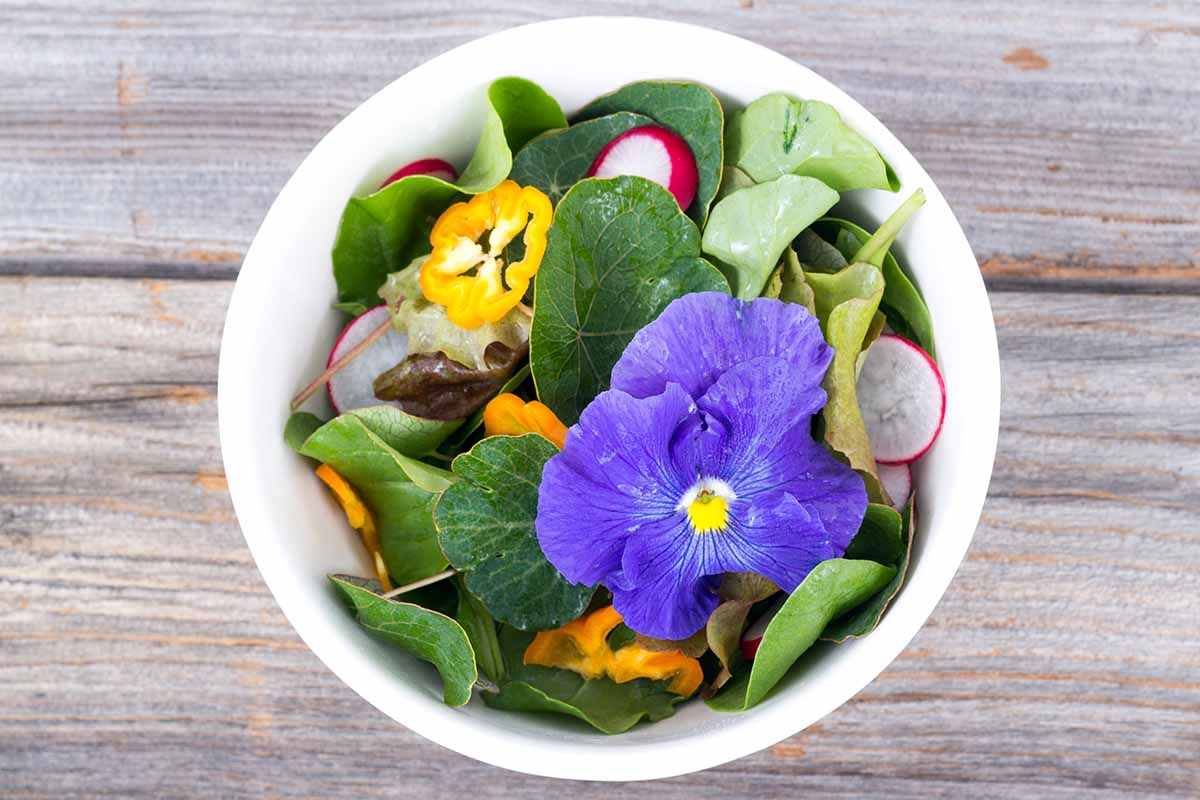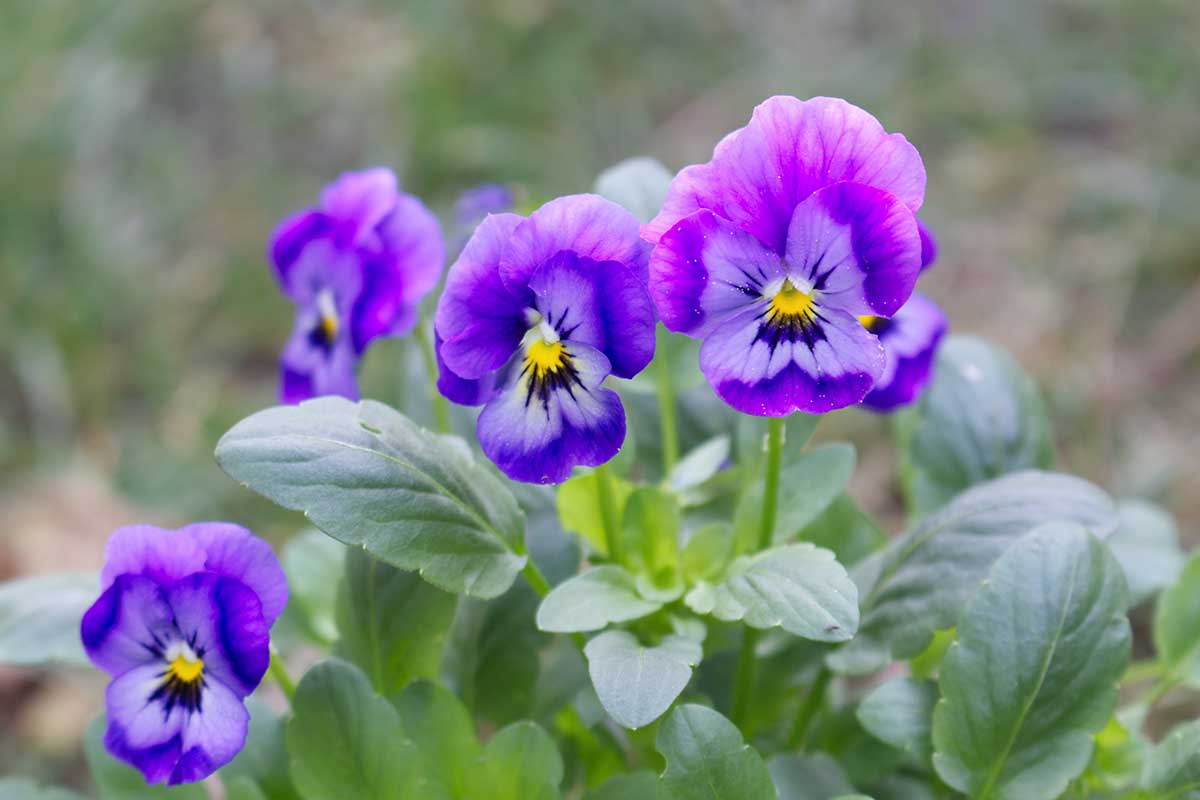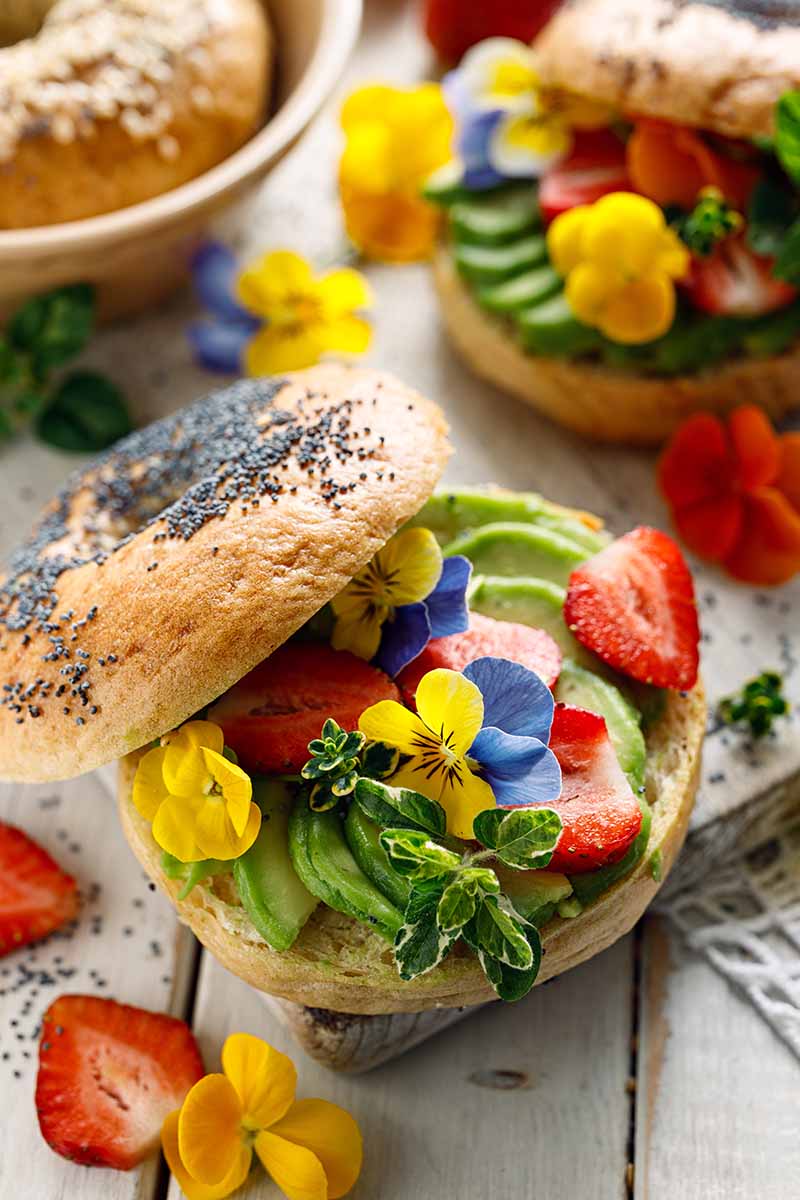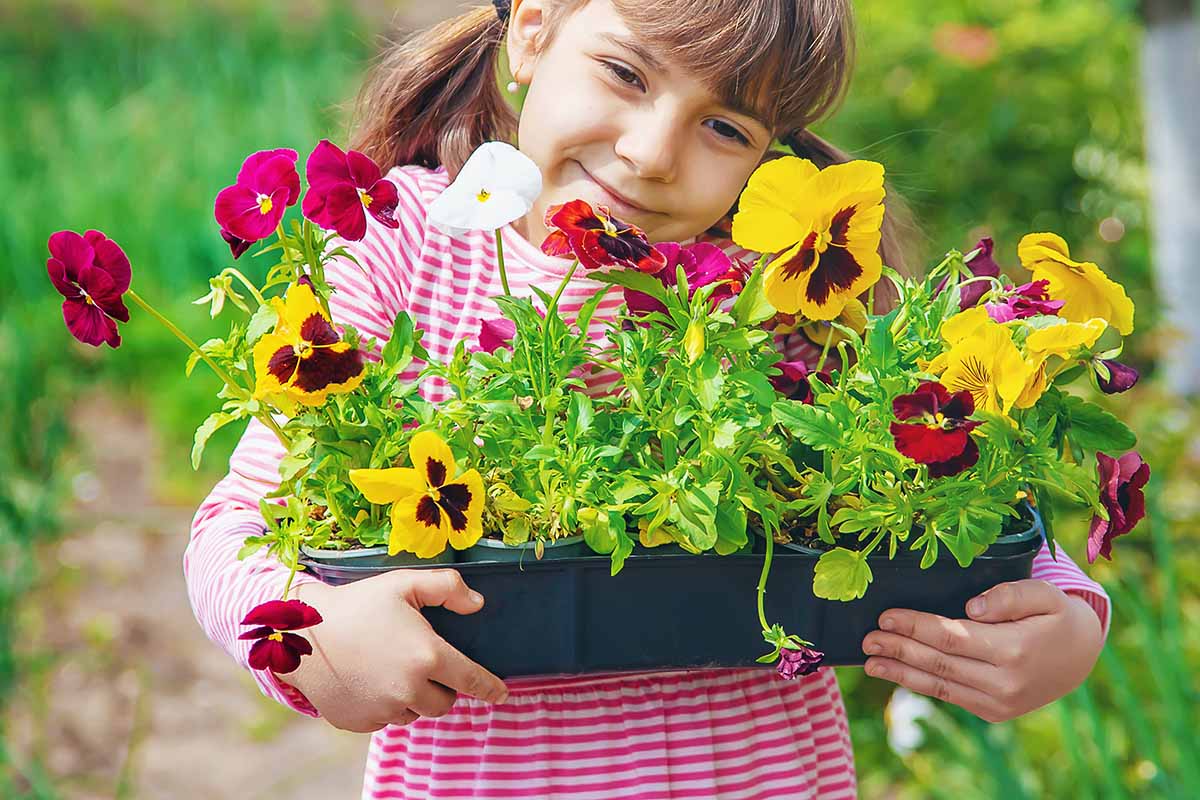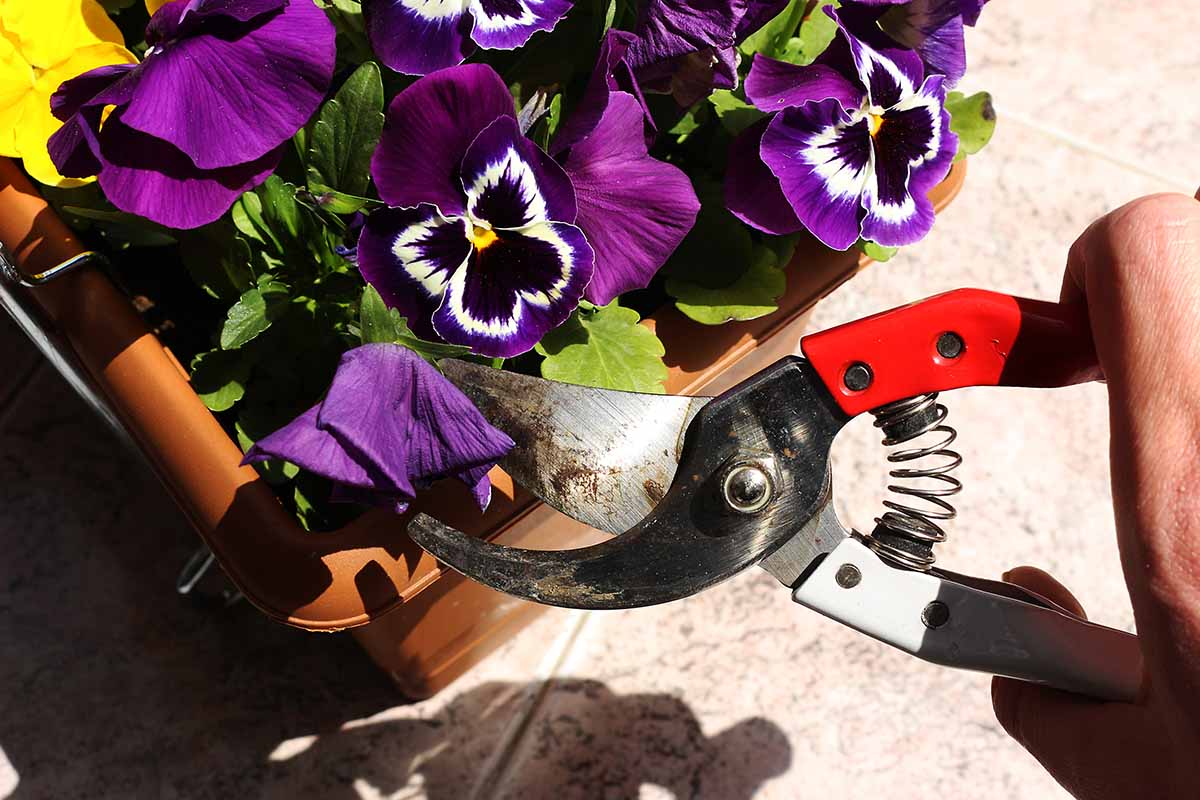Whether you’re growing hybrid Viola x wittrockiana in gardens or containers in late fall, or as an early bloomer in spring, their appealing colors can’t be beat. If you grow them organically, you can also enjoy those bright hues on a salad plate or atop creamy icing on a homemade cake. We link to vendors to help you find relevant products. If you buy from one of our links, we may earn a commission. Among the many edible blossoms that provide food for pollinators and sustenance for humans, pansies have a couple of other advantages. For one, you can eat entire blooms, petioles and all, not just the petals as you would with, say, marigolds or sunflowers. They’re also one of the first plants to bloom in spring, or possibly over winter if you grow the V. hiemalis varieties. They tend to bloom over an extended period if you take good care of your bedding or container plants, too – yay, more blossoms! These hardy plants are easy to care for, and a natural for growing organically, which is a requirement for flowers designated for human consumption. Most advantageous, though, is the extensive array of colors available. Different varieties may have blooms in white, lavender, orange, purple, or yellow, just to name a few. There are also varieties with multicolor blooms. It’s fun to experiment with the many hues in your cuisine or food-decorating projects. I’ve even known people who plant just the shades they need to match the theme of a forthcoming wedding or another special event. That’s the kind of preplanning I admire, and further evidence that us gardeners have an edge on enjoying edible blooms without spending too much money. As we proceed along here, I’ll share a little about staying safe when you grow any flowers to eat. Then I’ll tell you how and when to pick edible pansy blossoms. Here’s what to expect:
Which Parts of Pansies Can You Eat?
Just a friendly reminder about this cheerful plant: only the flowers are edible. The leaves and roots aren’t considered fit for human consumption. Pansies contain saponins, and the highest concentration of these is found in the roots. You’re still getting a huge advantage here, though, because the entire blossom is fair game for eating, including the petiole. So you can use whole blooms in salads or as lavish garnishes on cupcakes or cream-based spring pies, without resorting to painstakingly plucking petals.
Safety Tips for Growing Edible Flowers
An edible pansy is more than just another pretty face. You can eat the flowers in salads and sandwiches, or as garnishes on top of frosted cakes, cream pies, or parfaits. Bake them onto cookies, or you can dress up cocktails too. Other folks candy the petals to use to decorate baked goods, or freeze the blooms in ice cubes for festive beverage coolers. You can learn more about making candied flowers at home on our sister site, Foodal. But before a pansy reaches your plate, or even the harvest basket, you must take a few safety measures. First, make absolutely sure you’re picking flowers from a pansy plant, not some other flower that could be toxic. Be careful to read the label on the bedding plants you purchase or the seed envelope. And if you’re picking from a friend’s garden, in addition to getting a positive ID, ascertain what they’re growing in and whether any chemical sprays were used before you sample. Second, make sure any flowers you’ll eat or serve come from plants that haven’t been treated with herbicides. Avoid the ones that have been treated with pesticides, too, unless you are absolutely sure that whoever grew the flowers used only pesticides labeled for edible, organic crops. This “no chemical residue” requirement means you shouldn’t pluck blooms from plants growing near a roadway, along a public sidewalk, or in a median strip. In any of those locales, an edible flower can pick up harmful fumes or pesticide residue. Also, according to North Carolina-based extension agent Cyndi Lauderdale and North Carolina State University extension specialist Lucy Bradley, it’s important to avoid eating blooms from pansies planted in soil that contains untreated animal manure, unless the manure has been aged for at least four months before adding it to the garden. And though we’re emphasizing growing your own pansies, it’s worth noting that when you buy a potted plant that’s already in bloom from a florist or nursery, or if you pick up a pot at the grocery store, you shouldn’t eat those flowers unless they’re clearly and specifically labeled as organic, edible blooms. Floral distributors are likely to have grown those plants with pesticides that aren’t food safe. For best results, start from seed so you’ll have full control over the process. Finally, make sure to introduce pansy flowers into your family’s diet in small doses. And only add this one new ingredient to whatever you’re preparing, at least at first. Some people may have a mild allergic reaction to pansies or other edible flowers, so it’s handy to know which new food may have caused the reaction without lots of other unusual additions to attempt to rule out at the same time. Family members or guests with known food allergies or hay fever may be the most susceptible to a pansy allergy. Take particular care to introduce these edible blooms into their diets just a bit at a time, adding more the next time if the first dishes don’t cause a reaction, or be sure to provide unadorned alternatives at events.
Harvest and Storage Tips
It’s far more labor-intensive to make sure pansy blooms are safe to eat than it is to pick them! The harvest is only a matter of snipping the blooms from the tips of the stems, using sanitary scissors. Collect them in a container or basket that’s roomy enough to prevent damaging them, lined with a soft cloth or paper towels. If they need it, give them a quick swish in a bowl of cool water to wash away any loose dirt. Then let them dry on a clean, dry tea towel, and use them as soon as possible. Don’t waste your time picking wilting or fading blooms – they won’t taste as good and they’ll go bad quite quickly. Instead, focus on snipping newly opened flowers for edible use, and deadhead the faded blooms to encourage the plant to form more. Also, try to wait a day or so after a good rain or supplemental watering, so the blooms will taste mild and the petals will have time to air dry on the plants before you pick. If you harvest blossoms that have wet petals they may deteriorate quickly. You can also clip the blooms with a few inches of stem still attached, and place the flowers in a small vase of water if you’re not ready to use them right away. This is but a stop-gap measure, though. You’ll only be able to enjoy the blooms for a day or so if held in room temperature locations before you’ll need to pluck and rinse any you plan to eat. If you can’t use the blooms right away, you can also store them in an airtight container in the fridge for up to four days. Wait to rinse them until just before use. Use common sense here. If the blooms are starting to look wet or like they’re rotting, heave them into the compost. Or if you’re determined to use every single bloom you’ve harvested, you can consider dehydrating the blossoms or freezing them into ice cubes you can pull out to decorate clear-colored beverages or chill a punch bowl. The ice cubes won’t add sustenance or flavor to the party, but they sure are visually appealing, especially when the outdoor landscape is bereft of homegrown blooms. I’m not sure which came first: Growing more types of pansies so I’d have a variety of colors on hand to feature in different foods, or adding more color combinations to the menu because I’d seen how lovely the beautiful patterns and hues looked in my garden. Either way, it’s been so enjoyable to have blooms to enjoy outdoors in the garden and indoors on a plate that I recommend it to all my fellow cook/gardeners. How about you? Do you have any experience with these edible flowers to add? Please share your tried-and-true tips and any lingering questions in the comments section, below. And if you could use more helpful information about growing and caring for this Viola variety, check out these pansy guides next:
How to Grow Pansies and Violas for Multi-Season ColorTips for Growing Violets, Violas, and Pansies IndoorsHow to Care for Pansies in Winter
